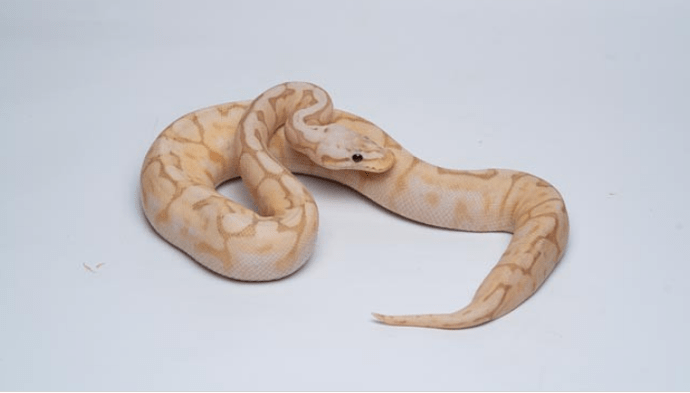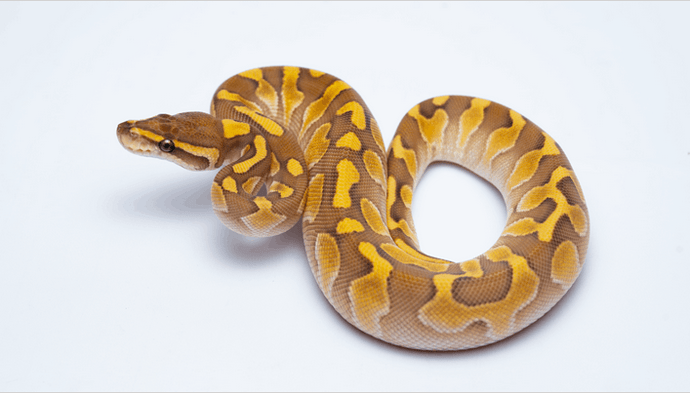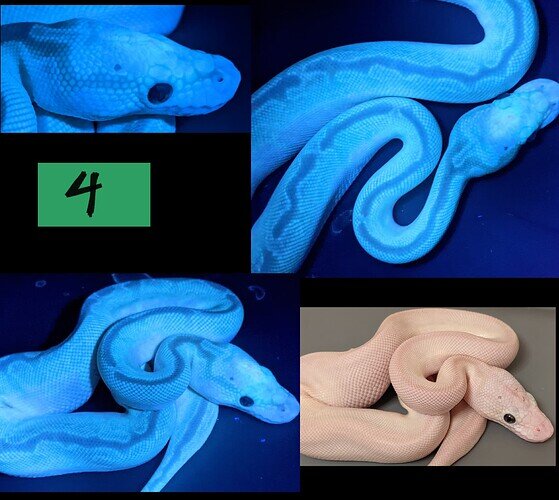I am looking into getting a couple of ball pythons for the purpose of breeding in the future. These are the ones I am currently looking at getting. What I am wondering is, what do you guys think of the pair and also are the prices good?
The prices seem okay. But I personally wouldn’t breed those two together.
The market is oversaturated right now. All of these genes are very common and 2 of them can be problematic. And while a 1.1 pair for 300$ sounds good. Remember that they’ll need time to grow out and that you’re also going to have to find a reptile vet nearby in case of emergencies like prolapse, eggbinding or potential incubation issues in hatchlings. Also if you are unsure of any of the genetics…I would study up on it before you consider it.
As far as the deeper reasoning against this pair as a first time project, here are my thoughts.
-
this pair can still produce normals. And again, very common genes. I just last year sold a female lesser pastel for 85$. And a Mojave enchi for the same. It’s an okay as far as experience, but may be difficult to home offspring. I personally try to have either a visual recessive or an allelic combo on one of the parents to guarantee there isn’t a ‘normal’ hatchling.
-
you’re pairing 2 butters. Super butter can occasionally cause bug eyes in hatchlings. Super lesser/butter is not a pairing I like to use for that reason when you can easily get a Mojave or Russo and end up with similar results and no risk of big eyes.
-
Spider. Just because dad doesn’t show much wobble doesn’t mean that the offspring are going to be the same. You can still produce some very wobbly offspring from this pairing and this is an issue that can cause feeding problems and in severe cases may need euthanasia. Not something I recommend for beginners.
I will consider what you have said.
Super Butters are very much all-white BELs, to the point where they can mask the visual expression of other genes. So even if you hit a baby with all the genes, it’ll just look like a BEL. You won’t be able to tell what additional genes a BEL is carrying, so you’ll be able to sell it as just a BEL instead of a BEL with tons of additional genes. The only way to tell is pay for genetic testing (they can’t identify ALL the known genes, yet) or grow them up and breed them to prove the genes out. A assume neither is a (financial) viable option for the OP (or most people). Many breeders avoid pairings that can possibly produce BELs for this very reason.
At this point in time, the most challenging part of this hobby for beginners is finding buyers for the babies. Once you are established and have a reputation and a following, it gets considerably easier to sell your babies. It’s all about the marketing. Having a social media presence is almost mandatory to make it long term. Many hobbyists don’t want to deal with social media or the marketing side of things. Those are the folks that struggle to make sales and bail on the hobby claiming “the ball python market is dead”. It’s never been even close to dead; those folks just don’t know how to (or want to) play the game.
Watch the “Leviathan Snakes” channel on YouTube. Steven is a BP breeder with a background in marketing. You may not like what he preaches, because it is hard work, but he’s one of the few that speaks the truth about the necessary marketing to make it as a BP breeder. I encourage everyone to follow that channel. And no, I have no connection to the channel.
That’s kind of off the rails and I realize the OP may not be looking to advance to a breeder. The OP may just want to produce a clutch or two a year.
Maybe the OP can talk to the local reptile pet store and strike a deal, at least in pencil, for them to buy his future clutch. Be honest about the genes you’re looking to produce. It can’t hurt to try. Like I said, the hardest part for the OP will be getting buyers for the babies.
There’s a couple other tricks as well. But shed testing is the easiest to know for sure.
I personally avoid making super butter/lesser so I don’t know if this trick works there, but with some other BEL combos, you can use a blacklight to ID some genes.
This one was a special lesser pastel spider I produced for example.
You can also ‘candle’ the top of the hatchling’s head to check for banana in BEL. Regular BEL will have red shine in the pupils. Banana BEL it’s the whole eye that shines red.


